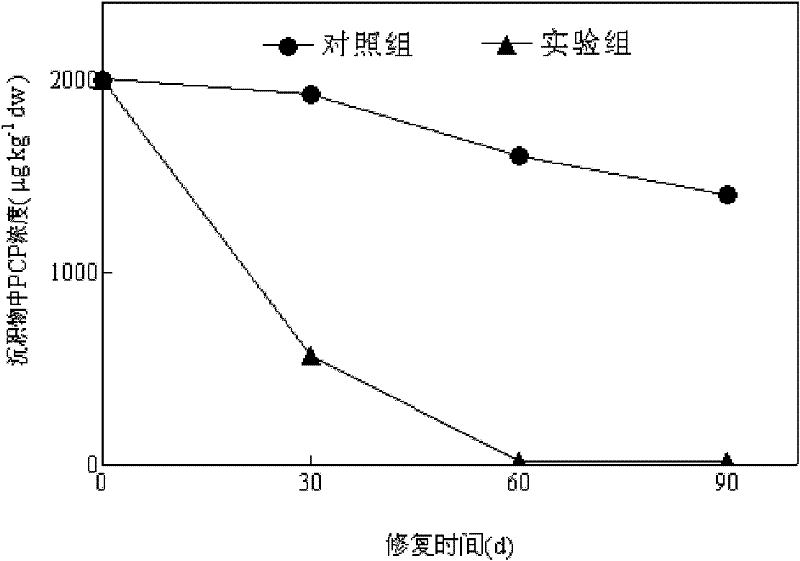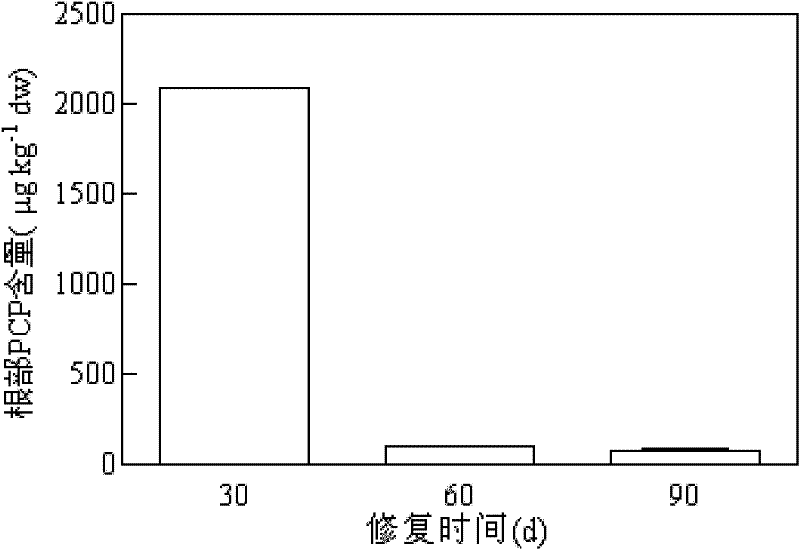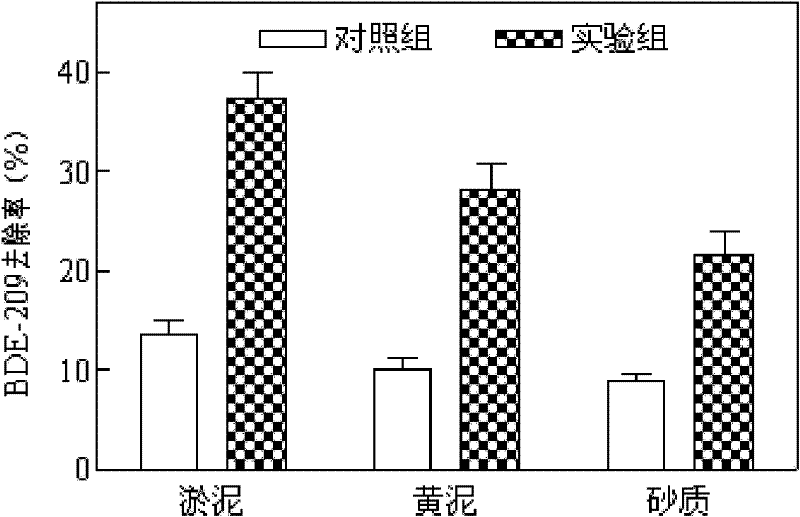Method for removing toxic organic pollutants from sediment by using plant
A technology of organic pollutants and sediments, applied in the field of phytoremediation, can solve the problems of large site environmental damage, secondary pollution, and high treatment costs, and achieve the effects of strong environmental adaptability, reduced repair costs, and strong implementability
- Summary
- Abstract
- Description
- Claims
- Application Information
AI Technical Summary
Problems solved by technology
Method used
Image
Examples
Embodiment 1
[0018] Aiming at the current lack of research on aquatic plant remediation (removal) of PCP pollution in sediments, using the test method of pond cultivation, the remediation efficiency and absorption and enrichment ability of aquatic plants onion to PCP in sediments were studied.
[0019] The test site was located in the experimental area of the Biological Park of Central China Normal University (30°30′40.79″N, 114°21′15.14″E). The soil used in the test was PCP uncontaminated soil in the planting area of the campus biological garden. After the soil samples were collected, Remove stones and large debris, and weigh, crush, and sieve soil samples after they are completely dry. Get the soil sample 65kg after above-mentioned treatment, quantitatively evenly spray pentachlorophenol mother liquor (200mg L -1 , dissolved in a small amount of ethanol), so that the original mass concentration in the soil was 2000 μg kg -1 (Based on air-dried soil), after the solvent volatilizes, a...
Embodiment 2
[0028] Aiming at the current lack of research on the remediation (removal) of PBDEs in sediments by aquatic plants, the repair efficiency and absorption and enrichment ability of aquatic plants onion to BDE-209 in sediments were studied by using the test method of plant incubator cultivation.
[0029] The test site was set in the greenhouse of the Central China Normal University campus. Three kinds of sediments (silt, yellow mud, and sandy sediments) were collected from Wuhan Nanhu Lake. PBDEs were not detected in the sediments used in the test. After the sediments were collected, after removing the debris Air-dried, crushed, sieved. Take 10kg of each of the above sediments, evenly spray BDE-209 (decabromodiphenyl ether) to the mother liquor (dissolved in dichloromethane), mix evenly and stir with the unpolluted sediments to make the initial BDE of the three sediments The mass concentration of -209 is respectively 1842.833±244.801μg·kg of sludge -1 dw, yellow mud 1726.150±196...
PUM
 Login to View More
Login to View More Abstract
Description
Claims
Application Information
 Login to View More
Login to View More - R&D
- Intellectual Property
- Life Sciences
- Materials
- Tech Scout
- Unparalleled Data Quality
- Higher Quality Content
- 60% Fewer Hallucinations
Browse by: Latest US Patents, China's latest patents, Technical Efficacy Thesaurus, Application Domain, Technology Topic, Popular Technical Reports.
© 2025 PatSnap. All rights reserved.Legal|Privacy policy|Modern Slavery Act Transparency Statement|Sitemap|About US| Contact US: help@patsnap.com



